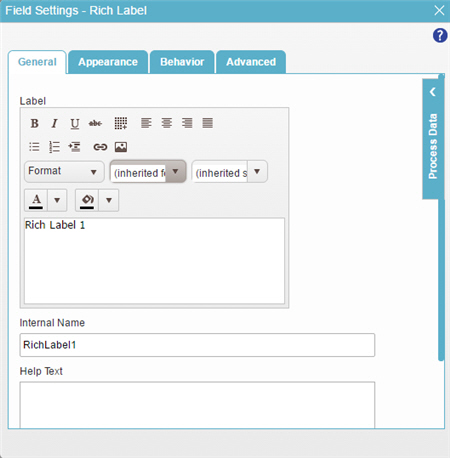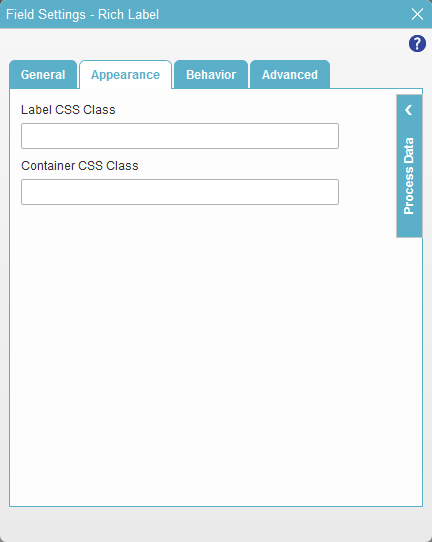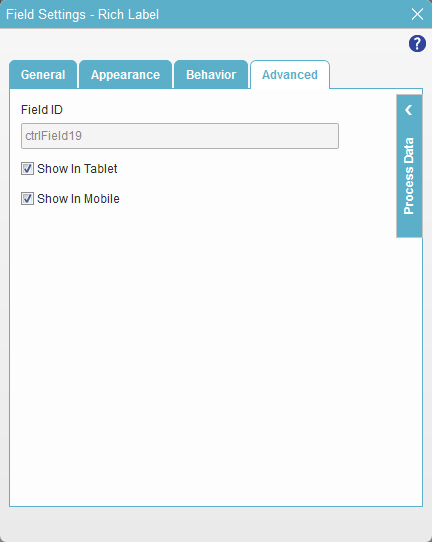Rich Label form control
A form control that lets a form user enter a label with rich text.
Configure the Rich Label form control
To configure
the
Rich Label  control,
do the procedure in this topic.
control,
do the procedure in this topic.
Video: Add a Rich Label Control to an eForm
Video: Common Configuration Settings in eForm Controls
How to Start
- On the Application Explorer screen, do one of these:
- Do one of these:
- Add a Rich Label
 control:
control:
- On the eForm Builder screen, in the Toolbox, open the Common Controls
 tab.
tab. - On the Common Controls
 tab, drag a Rich Label
tab, drag a Rich Label  form control onto your eForm.
form control onto your eForm.
- On the eForm Builder screen, in the Toolbox, open the Common Controls
- Change a Rich Label
 control:
control: - On your eForm, click the control, and click Edit
 .
.
- On your eForm, click the control, and click Edit
- Add a Rich Label
Procedure
- Complete the settings on the configuration screens. You can use the Process Data screen to specify a variable.
General
Specifies the basic configuration for the Rich Label form control.

Fields
| Field Name | Definition |
|---|---|
Label |
|
Internal Name |
|
Help Text |
|
Help Text Display |
|
Appearance
Specifies the look and feel your form control.

Fields
| Field Name | Definition |
|---|---|
Label CSS Class |
|
Container CSS Class |
|
Behavior
Specifies how the control shows on your form.

Fields
| Field Name | Definition |
|---|---|
Right To Left |
|
Visible |
|
Label Position |
|
Advanced
Specifies advanced settings for your form control.

Fields
| Field Name | Definition |
|---|---|
Field ID |
|
Show In Tablet |
|
Show In Mobile |
|



